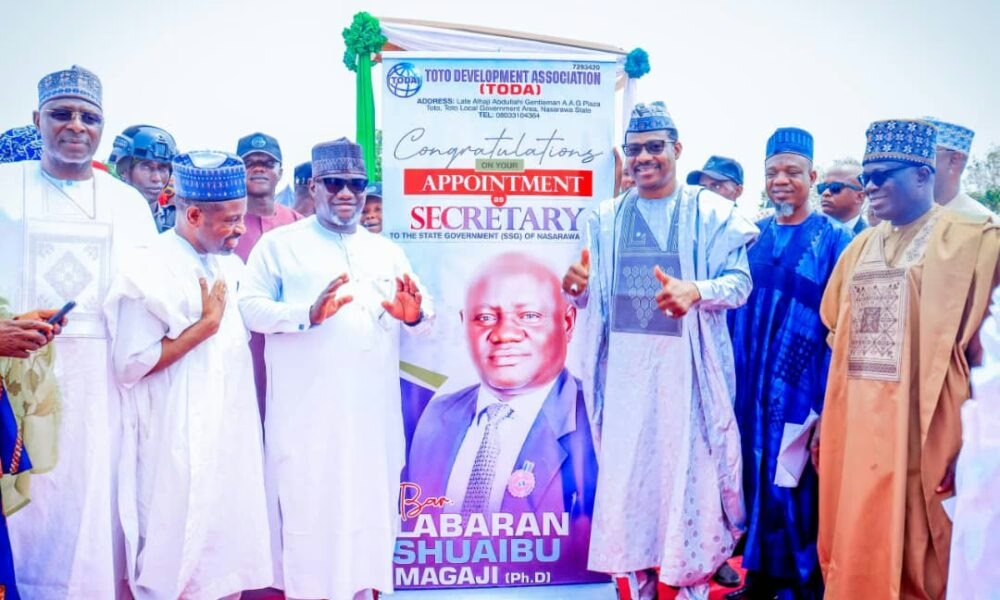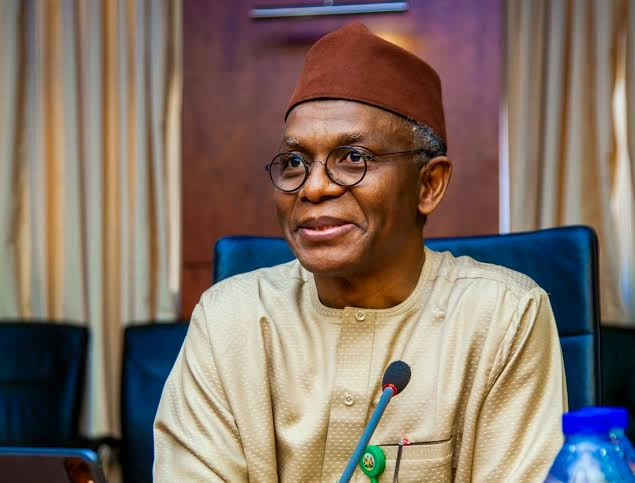An analysis of the role of state and local government leaders: challenges and problems (1)
Ebun-Olu Adegboruwa
Published By: Paul Dada
By Ebun-Olu Adegboruwa, SAN
Last week, the Nigerian Bar Association organized a State of the Nation session on local government autonomy and the effect of the judgment of the Supreme Court. This is how it should be, for lawyers to be directly involved in the affairs of the nation with a view to influencing them for the benefit of the people. In a particular meeting of the National Executive Council of NBA that I attended during the tenure of Paul Usoro, SAN, it was resolved that in all meetings of NBA, a discussion on the state of the nation should be listed on the agenda. I also attended a meeting of the Lagos Branch of NBA where it was similarly resolved to always include it in all our meetings. The Constitution of the NBA expects lawyers to be actively involved in determining the course of our nation and no meeting of lawyers can ever be properly constituted if there is no discussion on the state of the nation. I therefore commend the President of the NBA, Mazi Afam Osigwe, SAN, for his tireless efforts to put Nigeria on the agenda of NBA. The real challenge however is to always ensure that resolutions reached at such critical engagements are properly documented and implemented. The keynote address was delivered by My Lord the Honourable Justice Ejembi Eko (Retd) and he raised very thought-provoking issues for deliberation and consideration. The Honourable Attorney-General of the Federation equally highlighted the need for strict adherence to the rule of law when it comes to compliance with the judgement of the apex court. This is the point of convergence on this rather vexed issue, namely that whatever reservations that may be expressed, we cannot discountenance the intervention of the Supreme Court, being the final court of the land. In this vein, there should be no controversy on the implementation of the judgment as that will send a wrong signal of seeming lawlessness when we get to the point of deciding whether or not to obey the decision of that court. Permit me to share my own thoughts as one of the panelists at the NBA session.
INTRODUCTION:
The place of the State and Local Government Areas (LGA) in terms of proximity to the people at the grassroots is critical. They, especially the LGAs, feel the pulse of the masses the most. Leadership strength/stability or weakness/instability at these levels of government is most significant in that it impacts the populace the most. Over the years, the problem of lack of autonomy of the LGAs has remained a major challenge to the efficiency of the role of the grassroots government. Overriding interference in the operations of the LGAs by the State Government has remained a clog in the wheel of progress. However, the recent landmark policy decision of the Supreme Court of Nigeria in the case of Attorney-General of the Federation v. Attorney-General of Abia State & 35 Ors has become a watershed in LG administration, particularly on the issue of fiscal autonomy of the third tier of government. Even though it is my considered view that the federal government cannot constitute itself into the policeman of democracy in a federation, we must create the platform for the examination of the concept of federalism to safeguard the survival of the federating units, so that one arm will not muzzle the others with its overbearing might and financial muscle. In this brief inquiry, we shall focus on and explore certain key areas of responsibility, challenges and problems of both the States and the LGAs in relation to their roles.
NIGERIA’S FEDERAL STRUCTURE: A CONSTITUTIONAL ARCHITECTURE OF STATE AND LOCAL GOVERNMENT ROLES
The Constitution of the Federal Republic of Nigeria, 1999 (as altered) (“the Constitution”) is the go-to authoritative legal document in our discourse. It establishes the sovereign state of the Federal Republic of Nigeria as a Federation consisting of States and a Federal Capital Territory in section 2 (2). It further recognizes a third cadre of government, namely Local Government Areas in section 3 (6). It guarantees the system of Local Government by democratically elected local government councils and mandates the government of every State to ensure their existence under a law which provides for the establishment, structure, composition, finance and functions of such councils in section 7 (1). Thus, the three tiers/levels of government in the Federal Republic of Nigeria comprise the Federal, State and Local Governments. Nigeria, as a sovereign State, has evolved over time. An examination of Nigeria’s history shows that its systems and structure of government have metamorphosed through various forms to its present state like an imago from the egg stage, through the larval and pupal stages.
STATE GOVERNMENT LEADERS:
Leadership at the State Government level consists of key functionaries including:
a. The Governor: The executive powers of a State of the Federation is vested in the Governor of that State. Under section 5 (2) (a). Thus, he is the Chief Executive of the State by virtue of section 176 (2) and he is to exercise such powers either directly or indirectly in line with the provisions of the Constitution and relevant laws. He is responsible for policy execution, security, budgeting, economic development, and infrastructure. In a way, the Governor carries the State on his head.
b. The Deputy Governor: Under and by virtue of section 186, he assists the Governor and takes charge in his absence. The Governor may exercise executive powers through him. The practical experience however is that Deputy Governors have no role outside what the Governor permits.
c. State Executive Council: This comprises commissioners who oversee ministries such as health, education, works, agriculture, transportation, etc.
- “Be accountable, you have no immunity”: EFCC fires warning to Local Government Chairmen
- LG spending guidelines: NULGE commends Nigerian Govt’s new directive
- Gov. backs Federal Government to take over funding of primary education from LG
d. State House of Assembly: This constitutes legislators who make laws, exercise oversight by providing checks and balances to the executive, approve budgets, etc.
e. The State Judiciary: This is made up of the State High Courts. The inferior courts are not left out. They ensure justice through interpretation of laws thereby providing checks and balances both to the executive and legislative arms of government.
LOCAL GOVERNMENT LEADERS
Leadership at the local government level also involves important personnel who work in synergy to ensure delivery of the dividends of democracy to the people at the grassroots. Among these key functionaries are:
a. Chairman of the LGA: He is the Chief Executive of the local government responsible for grassroots governance, formulation of local policies and community project development as well as championing internally generated revenue (IGR).
b. Vice Chairman: He/She acts as an assistant to the Chairman in the course of administration. Like in the case of the Governor and the Deputy, the Vice-Chairman is best described as a lame duck.
c. Councilors: These local government officers act as representatives of wards within the LGA. They make by-laws, and approve budgets.
d. Supervisory Counselors: They head various departments such as health, education, and works.
THE MEANING AND NATURE OF LOCAL GOVERNMENT (LG)
Local Government has also been the system of political decentralization in which the power base of decision making is not national but local. In this system, functions are locally and directly executed by elected officials who have direct control over local affairs. According to the United Nations Office for Public Administration, local government refers to a political sub-division of a nation or (in a federal system), state, which is constituted by law and has substantial control of local affairs, including the powers to impose taxes or to exact labour for prescribed purposes. The indicators in the above definition connotes citizen participation in the management of local government affairs, efficient and equitable provision for essential services and resource mobilization for development purposes. It is a system of local administration under which local communities and towns are organized to maintain law and order, provide some limited range of social services and public amenities and encourage the co-operation and participation of the inhabitants in joint endeavour towards the improvement of their living.
The domain of local government operation is the grassroots. Grassroots democracy is the most basic expression of an ideal local government in a democracy because at that level, it is all about the people. Grassroots democracy, which is the area of coverage of the local government, has to do with a tendency towards designing political processes that shift as much decision-making authority as practical to the organization’s lowest geographic or social level of organization. It refers to a system of governance where decision-making power is vested in local communities, emphasizing participation, inclusivity, and self-determination. It involves decentralization and distribution of power through active citizen participation and involvement in decision-making. It is inclusive in that all relevant stakeholders share equal opportunities to make valuable contributions and leaders at this level are required to be transparent and accountable to the community. It propagates the concept of self-determination to the extent that local communities exercise the freedom to make decisions affecting their community. Anything short of these ideals derogates from the concept of local government administration and will defeat its purpose, existence and relevance.











